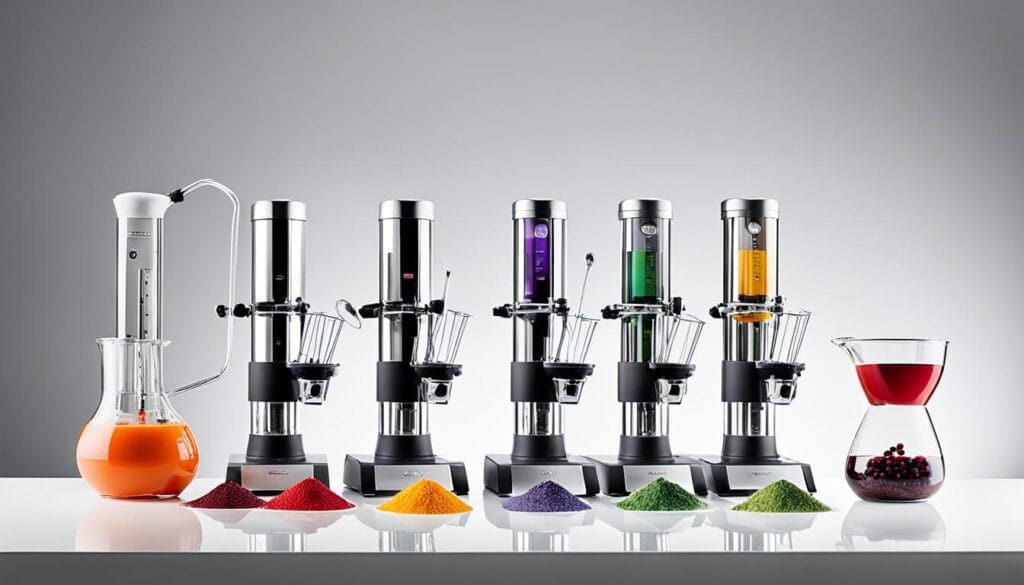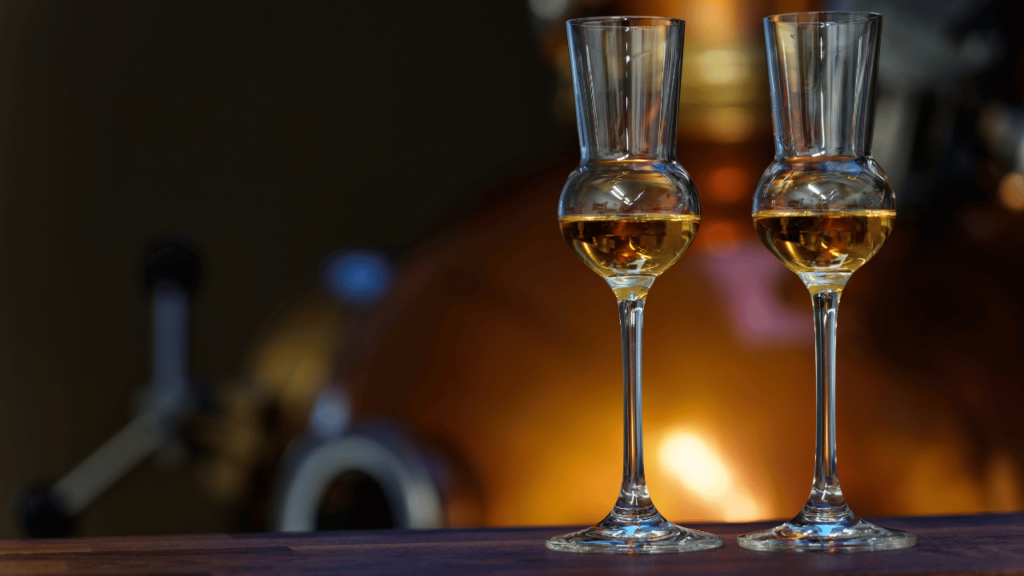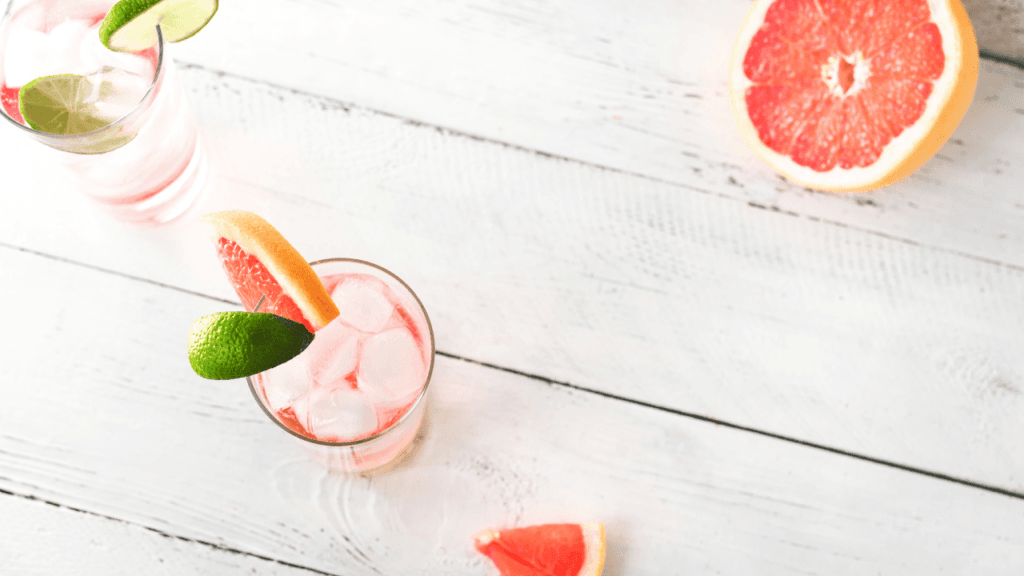Molecular mixology brings science into making cocktails to create exciting, new drinks. These cocktails use the latest trends in molecular mixology and new ways to serve them. They make drinks that appeal to all the senses, not just taste, making every sip an adventure.
Key Takeaways
- Molecular mixology blends science with art to create unique cocktail experiences.
- Advanced techniques like spherification and emulsification redefine traditional drink presentations.
- Key ingredients like sodium alginate and calcium lactate are essential in modern mixology.
- Molecular mixology trends often involve using novel tools and precise measurements.
- Innovative cocktail mixology offers a fun and challenging way to elevate home bartending.
Introduction to Molecular Mixology
Molecular mixology mixes science with cocktail making. It uses new techniques to change how drinks look and taste. Mixologists use special ingredients to create cocktails that are truly unique.
What is Molecular Mixology?
Molecular mixology combines science with drinks. It uses methods like spherification and foaming to make drinks in new ways. This creates drinks with exciting textures and flavors, making the usual cocktail something extraordinary.
History and Evolution
Molecular mixology started with the molecular gastronomy movement in the culinary world. Chefs and mixologists began to experiment with how science could change food and drinks. This led to new types of cocktails, like edible drinks and those made using liquid nitrogen.
Mixologists keep finding new ways to create with the help of tools like sous vide machines. The use of these tools shapes the future of cocktail making.
The Science Behind It
Understanding the science behind ingredients is key to molecular mixology. Mixologists change how drinks work by combining ingredients in new ways. For example, they can encase a liquid in a gel to make a drink that bursts with flavor.
They use special ingredients and tools to make visually stunning and delicious drinks. Whether it’s using liquid nitrogen or complex machinery, the goal is to make drinks that are as fun to look at as they are to drink.
Essential Equipment and Ingredients for Molecular Mixology
The world of molecular mixology needs special tools and ingredients. With them, regular drinks become amazing experiences. Using the right gear and top-notch additives is key for new cocktail creations.
Must-Have Tools
Cutting-edge mixology tools make molecular mixology possible. They give precise control over how a drink looks, tastes, and feels.
- Cream Whippers: Add nitrogen to make stable foam.
- Liquid Nitrogen: Quickly chills drinks and creates unique textures.
- Rotary Evaporators: Pull out strong flavors using a distillation process.
- Sous Vide Machines: Infuse liquor and cook ingredients at low, steady heats.
- Blowtorches: Caramelize or char drinks for a deeper flavor.
- Vacuum Chambers: Isolates pure flavor from ingredients.
- Centrifuges: Separates and purifies liquids for crisp, clear beverages.
Key Ingredients
Certain ingredients are key in molecular mixology for making new textures and tastes.
- Sodium Alginate: Turns liquids into spheres with a gel-like skin.
- Calcium Lactate: Makes spheres stable when used with alginate.
- Various Flavoring and Texturing Additives: Adds and enhances cocktail flavors and textures.
Where to Source Your Supplies
Starting your own molecular mixology venture means finding the right ingredients. Techmate is a top choice for tools and ingredients.
| Tool/Ingredient | Source |
|---|---|
| Cream Whippers | Techmate |
| Liquid Nitrogen | Techmate |
| Rotary Evaporators | Techmate |
| Sous Vide Machines | Techmate |
| Blowtorches | Techmate |
| Vacuum Chambers | Techmate |
| Centrifuges | Techmate |
| Sodium Alginate | Gourmet Culinary Retailers |
| Calcium Lactate | Gourmet Culinary Retailers |
Techniques in Molecular Mixology
Molecular mixology blends creativity with science. It creates amazing cocktail experiences. These methods enhance how we see and taste drinks, using both new and old practices.
Spherification
Spherification is a big part of molecular mixology. It turns liquid into spheres. This is done using sodium alginate and calcium chloride to enclose flavors in a thin skin. Drinks like Frozen Strawberry Vodka Spheres use this. They’re made with 50g of vodka mixed with lemon gel.
Foaming and Airs
Foams and airs make cocktails light and airy. Mixologists use soy lecithin to create stable foams. These foams sit on top of the drink, changing how it looks and tastes. It’s a blend of the new with the old, adding a fresh twist to classic cocktails.
Emulsification and Gelification
Emulsification and gelification change liquid into something new. Emulsification mixes liquids that normally don’t with the help of Ticaloid 210S. Gelification uses agar-agar and gelatin. For instance, White Wine Jelly uses 18.4% calcium lactate and gelatin from bovine collagen. Lemon Mint Caviar Shots, set with agar-agar, offer a unique feel, setting and firming at specific temperatures.
| Technique | Key Ingredients | Application |
|---|---|---|
| Spherification | Sodium Alginate, Calcium Chloride | Frozen Strawberry Vodka Spheres |
| Foaming | Soy Lecithin | Enhanced drinks with airy textures |
| Emulsification | Ticaloid 210S | Layered cocktail presentation |
| Gelification | Agar-Agar, Gelatin | White Wine Jelly, Lemon Mint Caviar Shot |
These innovative methods change how we enjoy drinks. By mastering these, bartenders can keep up with the latest trends. They continue to surprise and please their customers with new and exciting cocktails.
Popular Molecular Mixology Cocktail Recipes
Bartenders are pushing the boundaries of cocktails with science. They’re making drinks that are both fun and delicious. Let’s look at a few recipes that show how science and mixology come together to create something special.
One of these special recipes is the “Mojito Spheres”. It takes an hour to make and gives you 12 cool, round Mojitos. Here’s the step-by-step for this cool drink:
| Mojito Ingredients per Sphere | Quantity |
|---|---|
| Wedges of Lime | 4 |
| Sugar | 4 grams |
| White Rum | 30 grams |
| Club Soda | 60 grams |
| Fresh Mint Leaves | 24 |
| Calcium Lactate | 1 gram |
| Spherification Bath Ingredients | Quantity |
| Water | 500 grams |
| Sodium Alginate | 2 grams |
The Mojito Spheres are bathed in sodium alginate for 3 minutes. This makes a unique texture. It turns a classic drink into a surprise that’s fun to enjoy.
If you’re looking for something more intricate, try the “Aviary Gin & Tonic”. It needs precise measurements. You’ll use a total of 1.3 grams of citric acid and the other ingredients listed below.
- 2 ounces gin
- 1/2 ounce green Chartreuse
- 1/2 ounce simple syrup
- 1.3 grams citric acid
- 4 ounces Fever Tree Tonic Water
Advanced tools, like a carbonation device, make these drinks even cooler. The Perlini device from Perlage is one such device. It mixes technology with art in cocktail making.
Then, there’s the “Cucumber Spheres”. It’s a recipe that combines science with fresh flavors. Each cocktail has about 100 small cucumber spheres, which makes it a unique treat.
These drinks introduce new ways to enjoy texture and taste. They’re a great way to experience cocktails like never before.
Creating Frozen Strawberry Vodka Spheres
Frozen Strawberry Vodka Spheres show how creative we can be with cocktails. They are a perfect mix of great looks and amazing taste. They are part of the new wave in mixology called molecular mixology. For more cool recipes like this, check out cocktail recipes online.
Ingredients Needed
To make these spheres, you’ll need special ingredients used in molecular mixology:
- Vodka
- Lychee liquor
- Calcium lactate (18.4% calcium ions)
- Sodium alginate
The Step-by-Step Process
- Mix vodka and lychee liquor together.
- Include calcium lactate in the mix.
- Freeze the mix in molds for perfect spheres.
- Create a sodium alginate bath by mixing sodium alginate in water.
- Dip the vodka spheres that have been frozen into the alginate bath. This gives them a gel-like outer layer.
- Wash the spheres with clean water to get rid of extra alginate. Keep them in water to hold their shape for a few days.
Science Behind the Spheres
These spheres are made through amazing chemical reactions. The calcium from the calcium lactate and the sodium alginate create a thin gel layer. This layer covers the vodka mix, making it a sphere. This method, called frozen reverse spherification, is exact and makes the process faster. The result is a stunning cocktail experience that highlights the cool, new trends in cocktail making.
Perfecting the Lemon Mint Caviar Shot
The Lemon Mint Caviar Shot shows how fun and tasty molecular gastronomy cocktails can be. These cocktails change regular drinks into new, exciting experiences. Its surprising burst of flavors and feel make our creative side shine through our drinks.
Ingredients Needed
- 1 cup lemon juice
- 1 cup distilled water
- 1 gram of agar agar
- 24 fresh mint leaves
- 4 grams of sugar
- 4 wedges of lime
- Ice-cold vegetable oil
The Step-by-Step Process
- Preparation: Combine lemon juice, distilled water, sugar, and agar agar in a saucepan. Bring the mixture to a boil while stirring until the agar agar completely dissolves.
- Infusion: Add fresh mint leaves to the mixture and let it steep for 10 minutes. Strain to remove the leaves, ensuring a smooth solution.
- Spherification: Using a dropper or squeeze bottle, drop the mixture into the ice-cold vegetable oil. The cold oil will cause the mixture to form small spheres.
- Rinsing: After a minute, remove the spheres from the oil using a slotted spoon and rinse them in cold water to remove excess oil.
Science Behind the Caviar
Agar agar is key in making these caviar pearls. It’s a gel made from plants. When mixed with the lemon juice mix, it forms solid pearls in cold oil. This is the key of molecular gastronomy cocktails. Knowing how to gel thing using the right temperature helps make pearls that make the drink more fun. This is how we add creativity to drinks using molecular mixology.
Crafting White Wine Jelly
White Wine Jelly is a fancy way to make gel. It creates a unique cocktail creation that is fun to look at and eat. This molecular cocktail recipe changes the wine into a wobbly treat. It mixes old and new in the world of molecular mixology trends.
- 1/2 cup of white wine
- 1/2 cup of club soda
- 1 Tbs lemon juice
- 2 Tbs unflavored gelatin
- Frozen berries
We start by warming up white wine and club soda. Then we add lemon juice. Next, we sprinkle gelatin into the mix and stir until it’s all mixed up. Let this cool a bit before adding frozen berries. This makes protein fibers that trap water molecules. That’s how the jelly becomes solid when it cools.
Molecular mixology trends are getting popular in making cocktails. White Wine Jelly shows how cool and different you can make your drinks. By trying out new molecular cocktail recipes, you make old tastes into new solid treats that are tasty and look good.
This recipe combines new ideas with the familiar taste of wine. It blends the science and art of cooking.
Here’s a table with a clear list of ingredients and how much you need of each:
| Ingredient | Quantity |
|---|---|
| White Wine | 1/2 cup |
| Club Soda | 1/2 cup |
| Lemon Juice | 1 Tbs |
| Unflavored Gelatin | 2 Tbs |
| Frozen Berries | As desired |
Tips for Successful Molecular Mixology
Learning modern mixology skills and making great molecular cocktails can be tough. But, there are some key tips to help you:
- Choose the Right Equipment: You’ll need special tools like immersion blenders and droppers for amazing molecular drinks.
- Understand Your Ingredients: Get to know unique items for molecular mixology, such as sodium alginate and calcium chloride. They help make cool stuff like caviar.
- Balance Flavors and Textures: Making a cocktail isn’t just throwing things together. You want it to look great and taste amazing.
- Patience and Practice: It takes time to get these techniques right. Keep trying, and you’ll improve on your foam and gel creations.
- Learn from Experts: Claire Smith, who works with Belvedere, says it’s important to know how ingredients react. This helps you be more creative.
By following these tips and practicing, even beginners can make stunning molecular cocktails. Look at Robert Hess’s Drinkboy site for some inspiration. It shows how you can make traditional drinks more exciting for everyone.
Conclusion
In our journey through molecular mixology, we’ve seen how it’s both new and exciting. We talked about making drinks in unique ways, such as using spherification. This method turns drinks into bubble-like spheres. It’s cool for certain cocktails because of how versatile it is.
But there’s more to it. We also looked at adding foams and airs to drinks. This step makes them more interesting. Gelification is another process we explored. It lets you turn liquids into solid gels. This opens up new possibilities for cocktail ingredients.
Then, we talked about how ‘molecular gastronomy’ got started. It all began with a person named Herve This back in 1995. Since then, this kind of mixology has become more popular. Bars, especially after the pandemic, are using these methods to stand out.
There are many advanced techniques in mixology now. For example, there’s using agar to clarify drinks. And there’s spinning drinks in a machine to mix them just right. These methods make normal drinks into something special with unique flavors and looks.
Looking at these trends in mixology, it’s clear the field keeps growing. It encourages people to get creative with their drinks. With each new drink, you’re mixing science with tradition. The end result is a drink that’s both stunning and tasty. This marks an exciting new chapter in the world of creating cocktails.

























